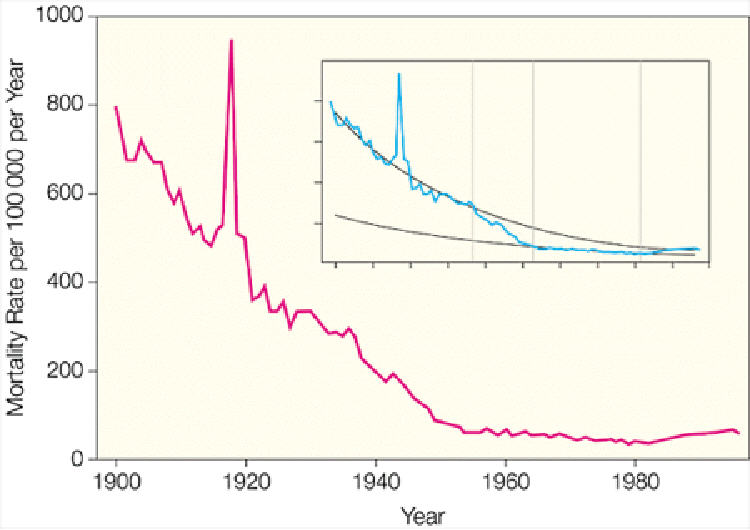| Infectious Disease Mortality in the US 1900–1996 Question1 #94778 Infectious disease mortality in the US declined across most of the 20th century. |

Although most of the 20th century has been marked by declining infectious disease mortality, substantial year-to-year variation as well as recent increases emphasize the dynamic nature of infectious diseases and the need for preparedness to address them." Source: Armstrong et al, JAMA 1999 Jan 6;281(1):61-6. |